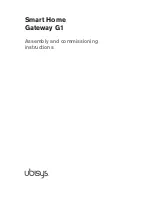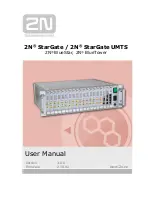
Version 0.1
8 June 2011
www.2myhome.eu
Technical details
Basic type: BASIC_TYPE_STATIC_CONTROLLER
Generic type: GENERIC_TYPE_STATIC_CONTROLLER
Specific type: SPECIFIC_TYPE_NOT_USED
Listening: TRUE, Z-Wave Lib: 4.51
CONTROLLER
A controller in the Z-Wave terminology is defined as a unit that has the ability to host a routing table of the
entire network and calculate routes based on that. Furthermore, the controller has the ability to pass on
routes to slave units, in order to enable them to transmit routed signals.
Z-Wave networks are established around a controller. The controller used to include the first node is by
default configured to act as Primary Controller with the capability to include/exclude nodes. The Primary
Controller is used to include all subsequent nodes in the network.
Being primary is just a role. Any controller can be primary but only one controller can be primary at a time. The
primary controller manages the allocation of node IDs and gathers information about which node can directly
reach which other node. Another Portable Controller or a Static Controller can be added as secondary
controller. The secondary controllers can get copies of the network information gathered by the primary
controller.
Z-Wave compatibility
Because this is a Z-Wave device, it means it can co-operate with other Z-Wave devices of other manufacturers.
It can co-exist in a Z-Wave network existing with product from other manufacturers.
Hops & Retries
The Z-Wave range has a range of up to 30 meters in line of sight. This signal is not limited to the 30 meter
range due to routing the Z-Wave message to other nodes in the network. This way the range of the Z-Wave
network can be expanded to 150 meters indoors (limit of 4 hops).





























